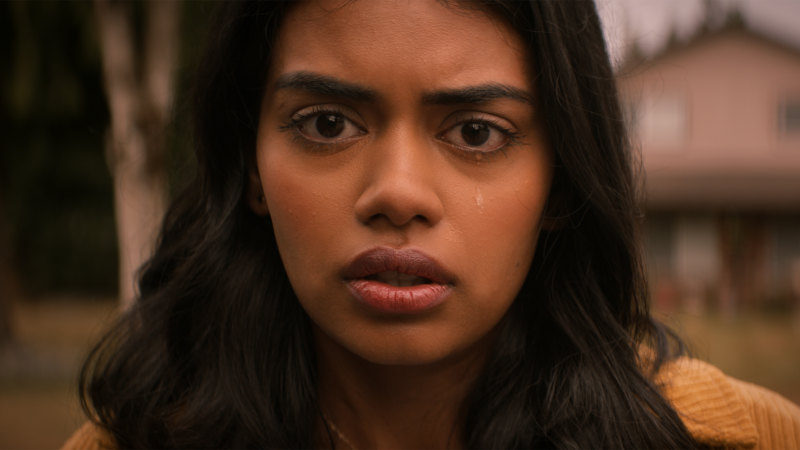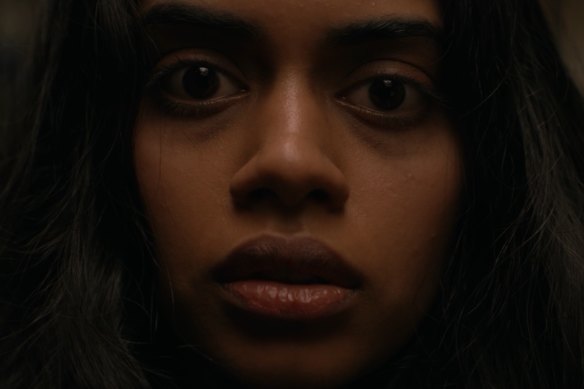Save articles for later
Add articles to your saved list and come back to them any time.
IT LIVES INSIDE ★★½
(M) 100 minutes
The paradox of being a teenager is that nothing is more normal than feeling like you don’t fit in. But there are different ways of not fitting in, and the problem is peculiarly acute for Samidha (Megan Suri), or “Sam” as she prefers to be called.
Megan Suri plays Samidha, who is targeted by a flesh-eating demon out of Hindu and Buddhist mythology.
Growing up in the American suburbs, she isn’t too keen on the traditions foisted on her by her Indian immigrant parents, in particular her homesick mother (Neeru Bajwa). The one girl at school from a similar background is Tamira (Mohana Krishnan), Sam’s former best friend who she’s drifted away from – and who has since become something of a living wraith, skulking behind her long dark hair and carrying around a mysterious glass jar.
It turns out the jar contains a Pishacha, a flesh-eating demon out of Hindu and Buddhist mythology; when the glass breaks, it doesn’t take long for Sam to be targeted. Recently, we’ve had an oversupply of independent horror films aiming to blend tastefully signalled subtext with appeal to the youth market. This first feature from the young Indian-American writer-director Bishal Dutta is an intermittently interesting example of the genre, though not an especially skilful one. Visual cliches abound: flashbacks are presented in shallow-focus fragments, nightmares are bathed in hellish red.
Suri is an engaging lead, with wide eyes equally suited for feigning innocence, blinking in scepticism or freaking out. But all the secondary characters are underwritten – and while everything about the story is blatantly symbolic, the symbolism remains murky.
On the realistic level, what most obviously “lives inside” Sam is simply her Indianness, which she yearns to escape from as far as she can (“It’s in my hair, in my sleep” runs the grunge-pop song by Australian singer Mallrat that we hear at the outset and again over the closing credits).
Clearly, Dutta isn’t equating this with murderous evil. We’re told the Pishacha feeds on negative energy, so it would make more sense to think of it as standing in for Sam’s resentful, paranoid feelings about her heritage, and for teenage angst in general.
But that reading doesn’t entirely add up. It’s not as though Sam can be held responsible for the horrors that overtake her – and there’s a sense at some level the film is on the demon’s side, as if it had manifested to teach her a lesson about staying in touch with her roots.
From that perspective, the message could be seen as conservative even for the genre, all about the need to keep a lid on things. In past eras of teen horror, sexually active characters were often marked for death; here, a fleeting kiss has dire consequences. Ultimately, the film’s strength lies in its ambivalence, palpable in touches such as the lingering close-ups of vegetarian curries and other traditional home-cooked dishes, where your reaction may depend on how hungry you’re feeling.
Even at the finale, it’s not entirely clear who Sam really wants to be – and if this robs the film of a degree of coherence, it also evokes something about the experience of adolescence many teenagers might connect with, wherever they happen to be coming from.
It Lives Inside is released in cinemas on September 21.
Find out the next TV, streaming series and movies to add to your must-sees. Get The Watchlist delivered every Thursday.
Most Viewed in Culture
From our partners
Source: Read Full Article




